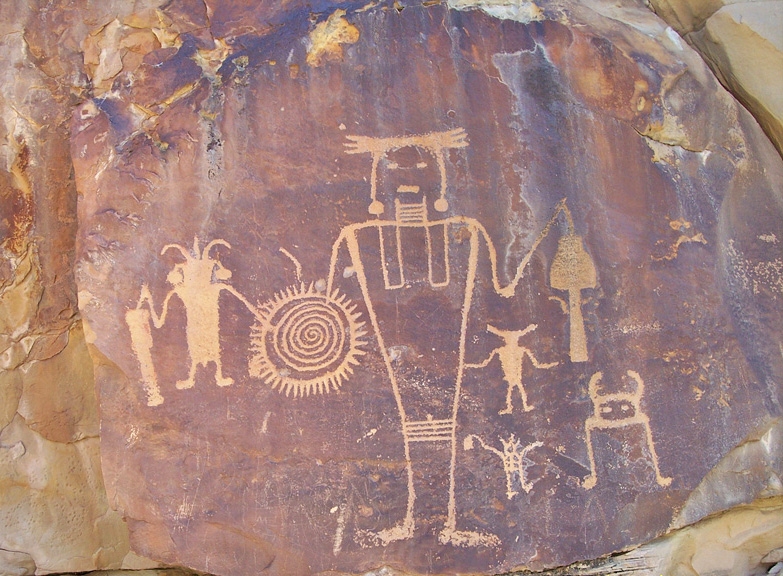Dino Graveyard: Photos of Dinosaur National Monument
Abundant life

The wide variety of ecosystems found within the national monument allows for vast diversity of flora and fauna. Within the 210,844 acres of monument land, over 1,100 different species of plants and animals can be found. Elevations ranging from 4,750 feet (1,448 meters) near the Quarry Exhibit Hall to over 9,000 feet (2,743 meters) at Zenobia Peak allow for many differing environmental zones and habitats. Shown here is a large herd of bighorn sheep, Ovis canadensis, drinking from the flowing Green River within Dinosaur National Monument.
Native peoples

The rich and diverse natural environment with two free-flowing rivers has also long been the homeland of Native American people. Artifacts and petroglyphs found within the monument show a rich and dynamic culture dating back some 10,000 years. The origin people who made their homes within the magnificent canyons are known as the Fremont Culture; they lived among the stone walls some 800 to 1,200 years ago. Both members of the Ute and Shoshone tribes still live in the area of the national monument today. An ancient petroglyph of Dinosaur National Monument is shown here.
Unearthing fossils

The discovery around the world of new dinosaur fossils continues. But for all those who cannot travel the world to see for themselves the remains of these memorable and remarkable creatures, Dinosaur National Monument along the Utah/Colorado border is a perfect alternative to visit. What seems like limitless dinosaur displays, spectacular canyons, raging rivers and limitless recreational and photographic opportunities are all found here, which makes this national monument one of America's true national treasures.
Get the world’s most fascinating discoveries delivered straight to your inbox.


